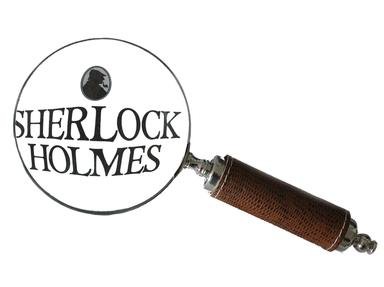Quiz Answer Key and Fun Facts
1. In the case of "The Norwood Builder" how did Sherlock Holmes deduce the location of the concealed room?
2. In the case of "The Dancing Men" what was the initial clue that allowed Holmes to trace Watson's thoughts so that he concluded that Watson would not invest in South African securities?
3. In the case of "The Solitary Cyclist" what did Holmes deduce about his client from her spatulate finger ends?
4. How does Holmes deduce that whatever had affected Dr. Huxtable in "The Priory School" had happened three days earlier?
5. In the case of "Lady Frances Carfax" which clue led Holmes to deduce that Watson had paid a recent visit to the Turkish baths?
6. In "The Valley of Fear" what clue did Holmes use to demonstrate to Inspector MacDonald that Professor Moriarty must have a secret source of income?
7. What conclusion did Holmes come to when he noted the missing dumb-bell in "The Valley of Fear"?
8. In "The Red-Headed League" what did Holmes deduce from the fact that his client had a right cuff that was very shiny and a left elbow that had a smooth patch?
9. In "A Case of Identity" what clue led Holmes to deduce that Miss Mary Sutherland spent a lot of time type-writing?
10. In "The Speckled Band" what clue led Holmes to deduce that Miss Helen Stoner had taken a good drive in a dog-cart along heavy roads on the morning she came to Baker Street?
Source: Author
Philian
This quiz was reviewed by FunTrivia editor
agony before going online.
Any errors found in FunTrivia content are routinely corrected through our feedback system.

